This Providence private school takes kids from the toughest neighborhoods and helps them thrive
Johnny Kue enrolled in the San Miguel School in 1993, one of five students from Providence's toughest neighborhoods to attend the private school. Some kids he knew didn't have dads. Some didn't have moms. Some were raised by grandmothers.
Kue, who grew up in the South Side, recalled that at that time, the West End was the place where Asian gangs loomed large. Little more than a decade before, his parents emigrated from Thailand. His mother worked under the table. His father had just earned his GED and taken steps to become a social worker. Together, they supported eight children.
Johnny Kue became a sort of guinea pig in an experiment. It was what he called "a leap of faith."
A modern education with 17th-century roots
Brother Lawrence Goyette founded the Lasallian all-boys middle school in 1993 based on centuries-old values. The school is affiliated with De La Salle Christian Brothers, which Saint John Baptist de La Salle founded in the 17th century. Now, ringing in its 30th anniversary, its mission is to offer educational opportunities to youth from low-income families, many of whom are students of color.
Kue's small class was where it all began. In those days, there were no uniforms, no gymnasium and no high-tech devices. Chess boards for students were fashioned from cabinets. Goyette didn't know if the school would make it past a few months.
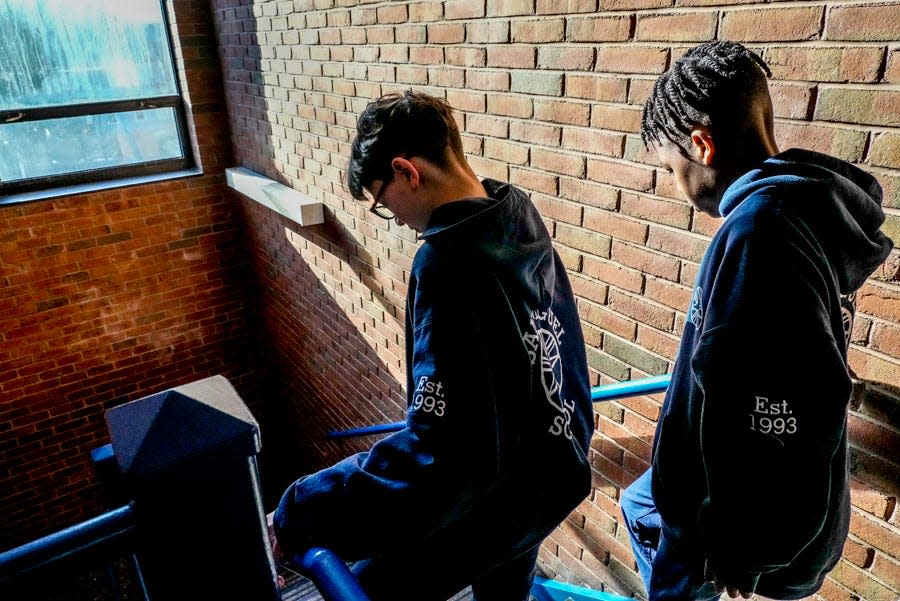
Then a few months turned into a few years. Throughout that time, with neither a school counselor nor a social worker, San Miguel lost more than 20 students to a host of obstacles, from psychological issues to academic problems.
Kue made it through. Today, he works as director of graduate support at the school on Branch Avenue, helping the school's more than 60 students navigate their way through applications, placement tests and shadow visits to find the perfect high school. It's tailor-made private education that, unlike some elite niches of the educational system, is not for the rich.
Educate the poor 'as if they were the children of kings'
John Wolf, the school's executive director, who began in that role five years after San Miguel got up and running, said it's not for the middle class, either. This is an institution where preference is given to the have-nots.
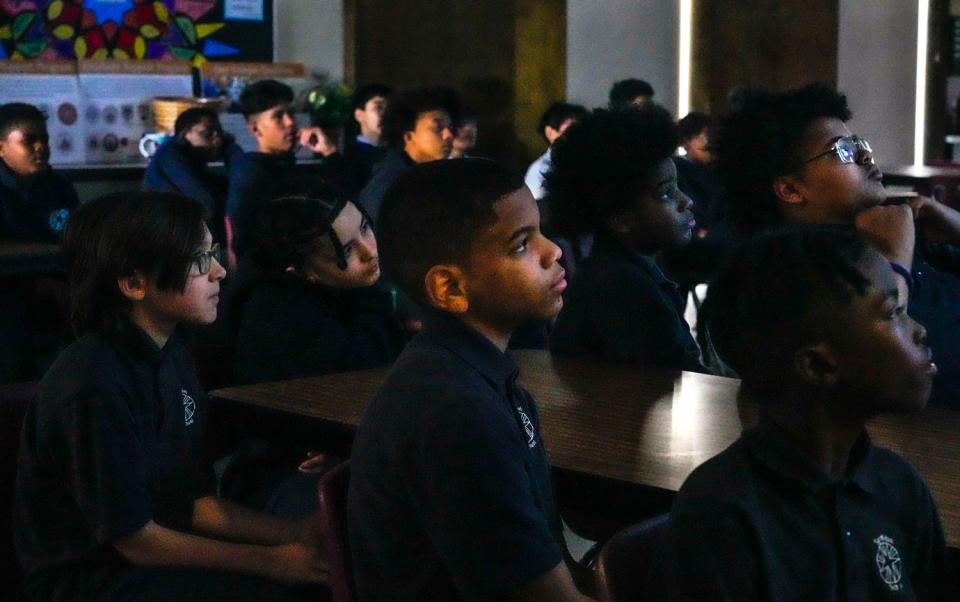
"The Lasallian thing ... is that we commit to serve the children of the poor in education as if they were the children of kings," he said. "We've had people see the quality here and say, 'Hey, could I get my kid in? I make $100,000 a year, I make $60,000 a year. I can pay you $10,000 or $12,000 to have my kid here in middle school."
But that's not allowed. Even Wolf wanted his child to attend. No exception was made.
Parents pay, on average, $800 per year so their student can attend, though the amount is based on what they can afford. The vast majority of the school's funding comes from grants, fundraising events and individual contributions.
When it comes to access, San Miguel is not necessarily for the cream of the crop in academics either. On academics and behavior, the school aims to accept students in thirds: One third may be academically stellar, one third may have some behavioral struggles or some academic aptitude that's not being nurtured, and one third — behaviorally and academically — may be in need of serious intervention.
"Some people think of private schools, independent schools as just being cream-skimming," Wolf said. "And that's not what we do."
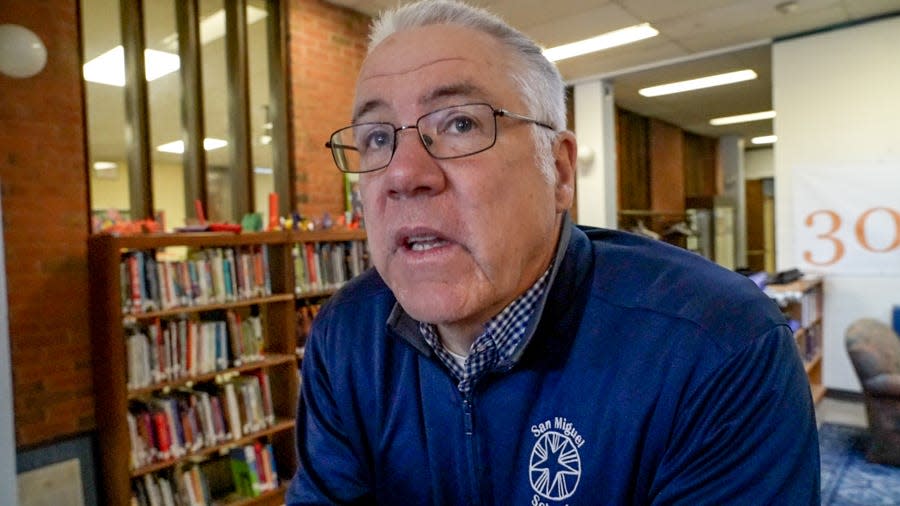
What does a day at San Miguel look like?
Walk the halls of San Miguel and practically every student offers a greeting or even a handshake and an introduction. Such behavior might earn a kid a "Man of the Week" award proudly displayed on a bulletin board near the school's entrance. That's where a Providence Journal reporter started a tour of the school led by sixth-graders Amari Gomes-Nelson and Isaiah Perez, two of 16 students in their class.
Both are avid chess players, competing in a tournament complete with brackets drawn on a white board. Each stops to point out their names. They also enjoy guitar, drums, math and weekly lunches with adult mentors who bring them meals and an offer them an hour to hang out.
On an upper floor, students who are part of a "green team" have grown a lavish bed of produce in a hydroponic garden. Wolf concedes that he's found himself an occasional lunch there, with permission of course.
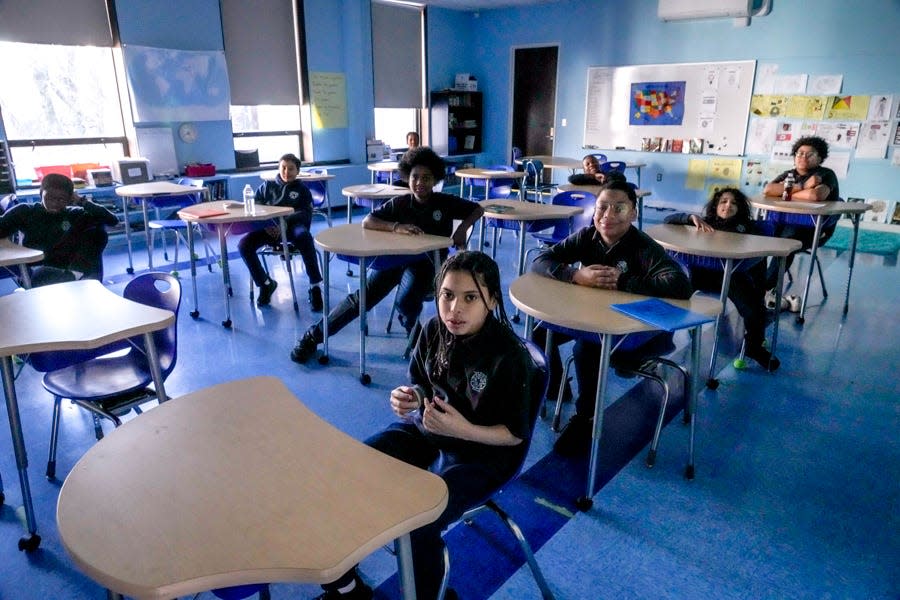
Sometimes the food becomes ingredients for cooking classes held in the school's commercial kitchen in a farm-to-table experience. Students learn familiar favorites like chicken parmesan and quesadillas, but they also learn safety skills, such as how to carefully chop vegetables or the importance of monitoring the stove. At home, it helps take some pressure off busy parents.
Each morning begins with an assembly. A recent one had students learning about about Jane Goodall, setting their intentions for the day — many of which were focused on mothers — and concluded with students closing their eyes and taking in a deep breath.
Since it all began in 1993, a growing list of alums have returned to visit, ringing a special bell that only the roughly 350 graduates are allowed to sound.
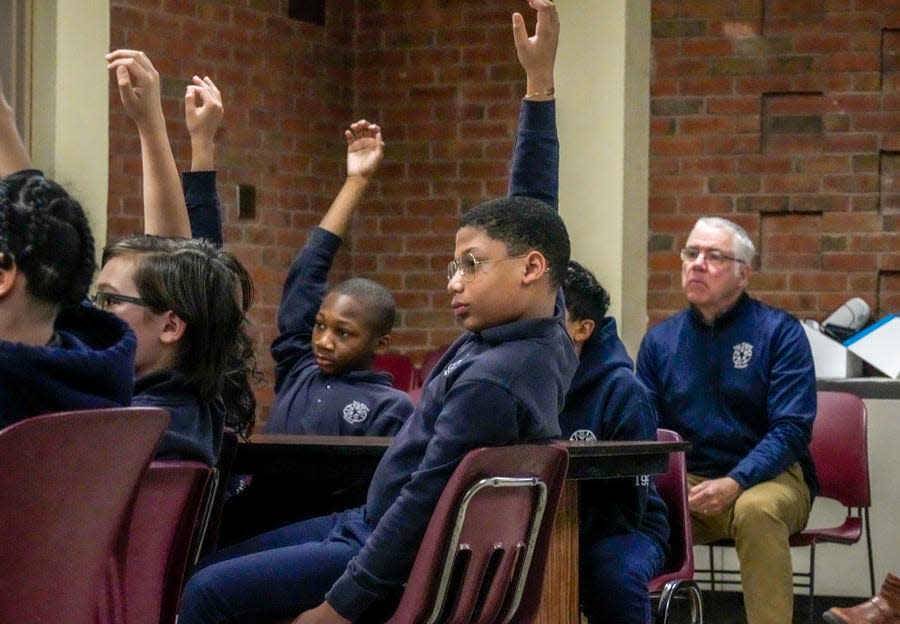
Kue, having watched many move on, still remembers the days he entered as a student.
"When we walked in the building, we felt like we were accepted by our teachers," he said. "There wasn't any kind of judgment on us. They wanted to push us to be the best versions of ourselves, and they saw something in us that we didn't see in ourselves."
This article originally appeared on The Providence Journal: San Miguel School in Providence celebrates 30th anniversary

